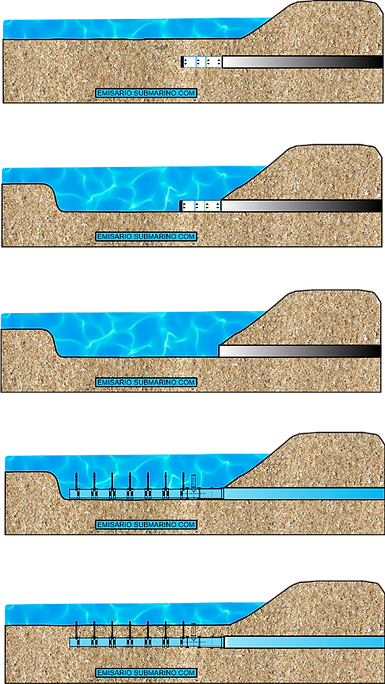
COOLING SYSTEM
The production units of industrial plants have evolved in search of greater efficiency and less environmental impact, for example, taking advantage of water resources, such as the sea, in coastal areas.
Cooling systems need a water intake to meet minimum flow rates and an outfall to discharge the treated effluent into the sea.
Sea water intake (SWI)
The Seawater Intake (SWI) system is composed of different elements: collection towers, sea outfalls and catchment and pumping pitchers. The function of these elements is to capture the minimum flow from the sea, from a depth where the water temperature is required for the correct operation of the process units.

In order to use the water collected from the sea, in some plants a pre-treatment is required to adapt the physical-chemical and biological characteristics before carrying out the seawater desalination process to produce demineralized water with the required quality, thus avoiding corrosion, scale and the consequent deterioration of the facilities.
Sea water outlet (SWO)
Before being sent by the Seawater Outfall (SWO) and discharged by means of diffusers to the sea, the effluents from the process units of the plants will be treated to correct the parameters allowed by legislation and sent to the connection chamber for final dilution in the discharge outfall.
Microtunnels are an ideal solution for the collection and discharge systems of sea outfalls due to the low impact they produce on their environment and the great flexibility they offer in their design.

Bibliography:
-
Descriptive report Talara Refinery Modernization Project (PMRT). Petroperú.
-
refineriatalara.com/wp-content/uploads/2018/01/memoria-pmrt-ua-tc-6-2017-07-03.pdf
-
Peter Hennig and Lutz zur Linde, (18 May 2011). Trenchless installation methods of Sea Outfalls. OSMGP.
osmgp.gov.ar/symposium2011/Papers/50-henning.pdf


